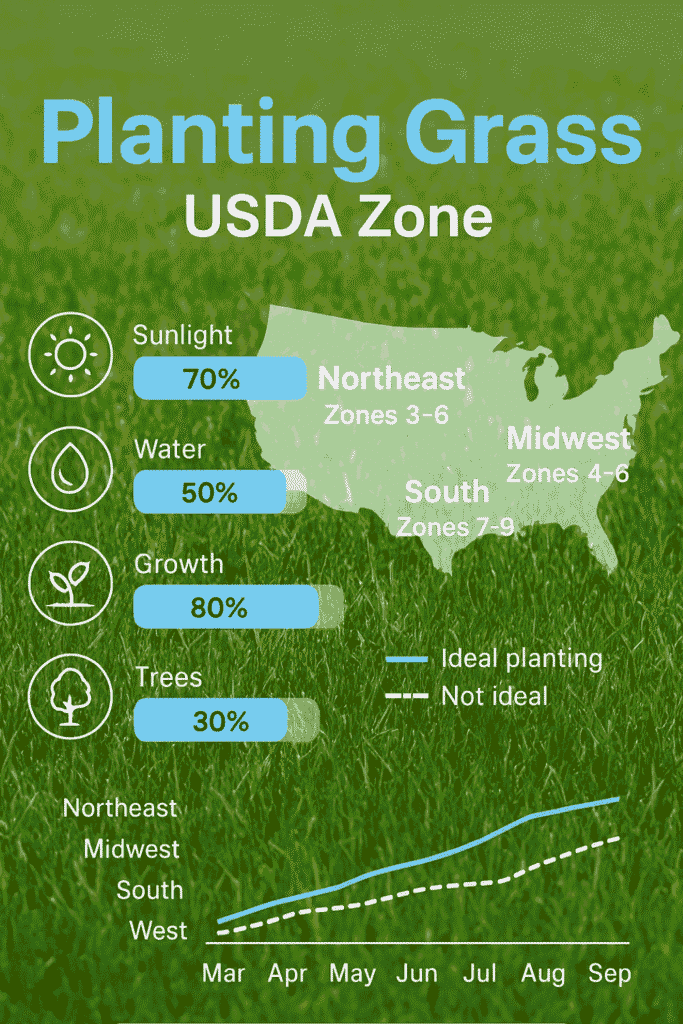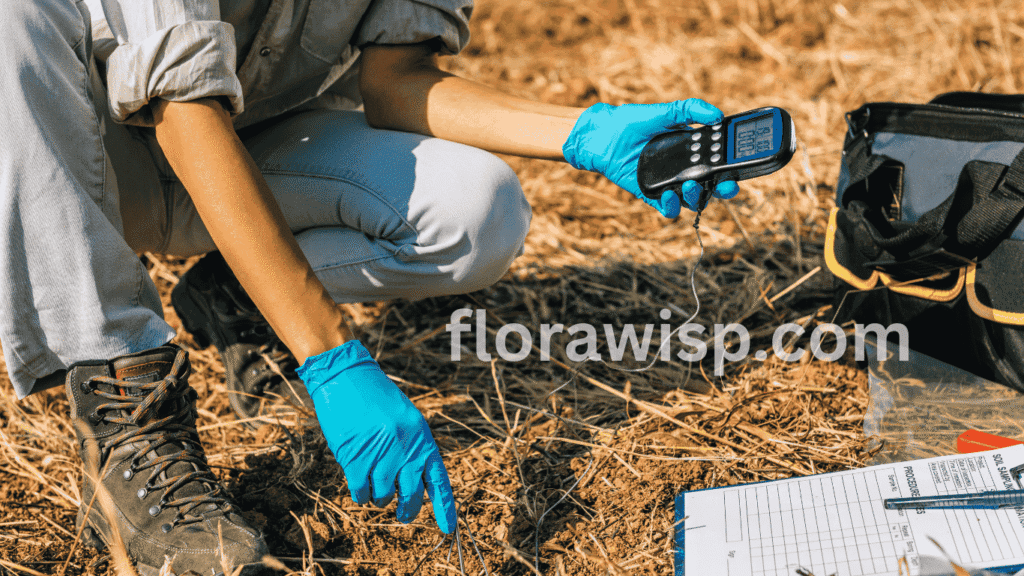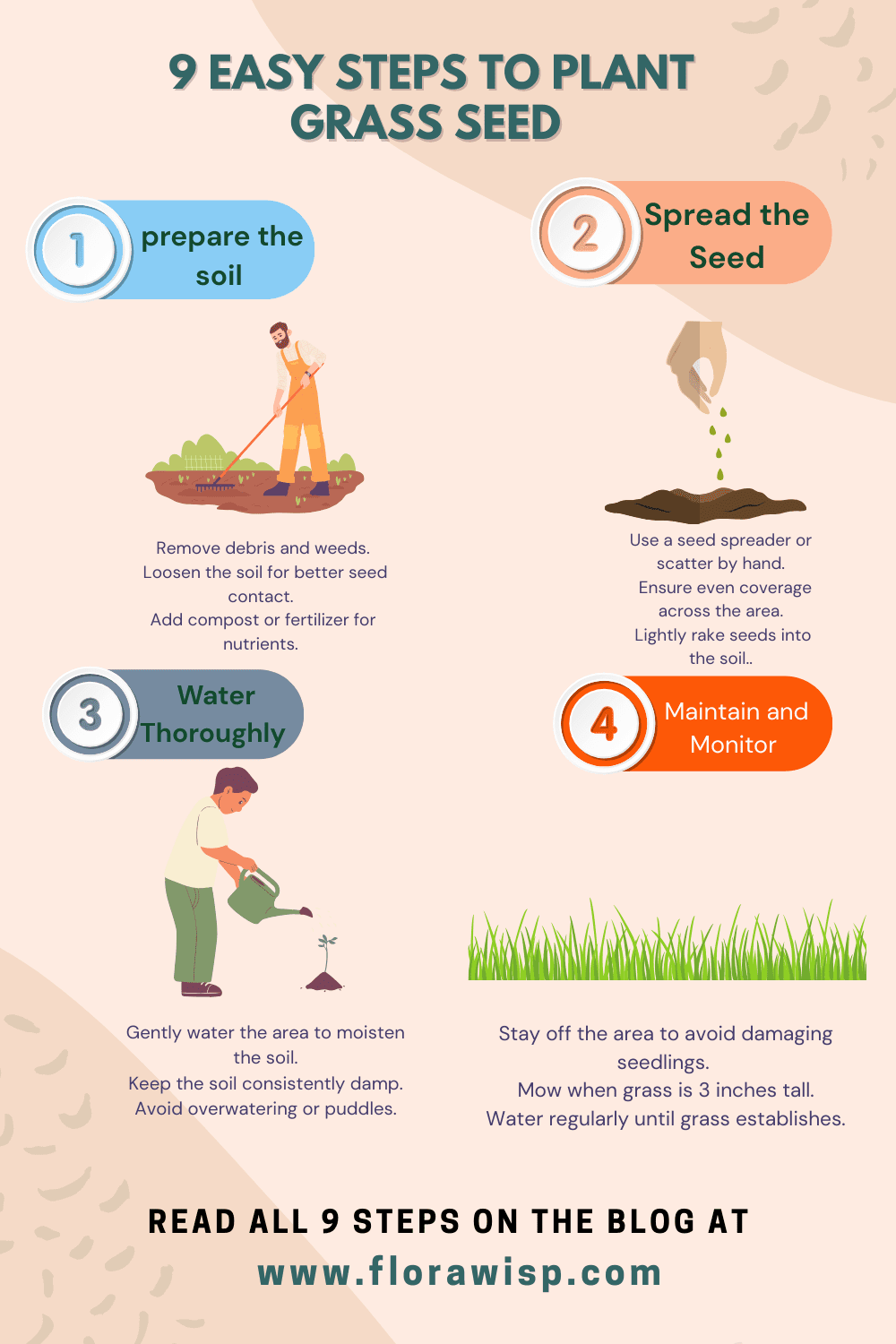Knowing the best time to plant grass seed can make the difference between a patchy lawn and a lush, healthy yard. The timing depends on your region, soil conditions, and whether you’re growing cool-season or warm-season grasses. In this guide, lawn experts break down the ideal planting windows, seasonal tips, and insider practices so you can achieve faster germination, fewer weeds, and long-lasting results.
From experience, planting too early in spring might feel tempting, especially after a few warm days but don’t fall for it. I made that mistake once with Bermuda in a cooler zone; the soil hadn’t warmed up, and germination was spotty and slow. Timing is everything when it comes to grass. Get it right, and your lawn pays you back all season long. Miss it, and you waste seed, water, and time.
Jump To:
When Is the Best Time to Plant Grass Seed?
Video Credit: Do My Own
The best time to plant grass seed is in early fall (late August through September). During this window, soil temperatures are still warm from summer, which helps seeds germinate quickly, while cooler air temperatures reduce stress on young seedlings. Rainfall is also more consistent in fall, keeping the soil moist without the need for constant watering.
Planting grass in fall gives grass a head start before winter, allowing roots to grow deep and strong. By the time spring arrives, your lawn is already established and ready to thrive unlike spring seeding, which forces young grass to compete with aggressive weeds like crabgrass.
Experts note that grass seeded in fall has up to 30% higher survival rates compared to spring seeding, because it avoids extreme summer heat and weed competition. Simply put: fall provides the perfect balance of warm soil, cool air, and fewer weeds, which is why it’s widely recommended as the ideal time.
| Why Fall Is The Best Time To Plant Grass Seed | Source |
|---|---|
| Fall gives grass more time to build roots before summer. | Virginia Cooperative Extension (Virginia Cooperative Extension) |
| Fall offers stable moisture, milder sunlight, reduced weeds. | Jonathan Green (Jonathan Green) |
| Experts recommend fall due to optimal conditions & less stress. | New York Post (expert quotes) (New York Post) |
| Fall seedings germinate quicker and require less watering. | Grass Pad guide (Grass Pad) |
Planting Grass Seed in Spring
Spring is often seen as a fresh start for lawns, but it’s also the trickiest time to establish grass. Unlike fall, spring planting means your seedlings will soon face the stress of summer heat, weeds, and potential drought. Still, with the right approach, you can turn a spring seeding project into lasting success.
Key Challenges of Spring Seeding
- Weed Competition: Spring is peak germination time for crabgrass and other weeds that often outpace new grass seedlings.
- Short Growing Window: Grass has only a few months to establish before summer stress arrives.
- Moisture Variability: Spring can swing between soggy soils and unexpected dry spells, making watering management critical.
How to Improve Success in Spring
- Use a Starter Fertilizer with Crabgrass Preventer: Many lawn care experts recommend a product containing mesotrione, which protects against weeds without harming seedlings (unlike traditional pre-emergents).
- Time It Just Right: Seed after soil has warmed (above 50°F for cool-season grasses) but before weeds aggressively take over.
- Overseed Thin Spots, Not Entire Lawns: Spring is better for patching bare areas rather than complete lawn renovations, which are best saved for fall.
- Focus on Watering Consistency: Light, frequent watering (2–3 times daily for the first 2 weeks) helps overcome spring’s unpredictable rainfall patterns.
Best Planting Time: Cool-Season vs. Warm-Season Grasses
As we mentioned above, the best overall time to plant grass seed is in early fall (late August through September).
But timing can also depend on the type of grass you’re planting. Different grasses thrive in different temperature ranges, so knowing whether your lawn uses cool-season or warm-season grasses will help you fine-tune your seeding window for the best results.

Cool-Season Grasses (Northern Lawns)
Cool-season grasses, such as Kentucky Bluegrass, Perennial Ryegrass, Fine Fescue, and Tall Fescue, grow best when soil temperatures are between 50°F and 65°F.
Best planting window:
- Late summer into early fall is ideal (August–October, depending on your region).
- This gives seedlings enough time to establish roots before winter frost.
- Fall seeding also avoids the stress of summer heat and competition from crabgrass.
👉The University of Georgia Extension notes that in northern climates, fall planting leads to better establishment because the roots develop before extreme cold sets in.
Warm-Season Grasses (Southern Lawns)
The best time to plant Warm-season grasses, such as Bermudagrass, Zoysia, St. Augustine, Centipede, and Bahia grass, is late spring and early summers. These grasses need soil temperatures of 65°F to 70°F to germinate well.
Best planting window:
- Late spring to early summer (May–June in most regions).
- This ensures the soil is consistently warm enough to spark germination.
- Planting too early in spring, before soil warms up, leads to patchy, slow growth.
👉 “University of Georgia Extension recommends planting warm-season grasses statewide between May 15 and July 15, aligning with consistently warm soil conditions.” UGA Extension
Crux:
Fall remains the best time overall for most homeowners planting cool-season lawns. But if you’re working with warm-season grasses in southern regions, late spring to early summer is your sweet spot.
Regional Guide: Best Time to Seed Grass Across the U.S.
Planting grass seed at the right time largely depends on your region’s climate patterns. A warm-season grass thrives in long, hot summers, while cool-season grasses prefer milder springs and falls. Many homeowners make the mistake of following generic timelines without considering local weather shifts leading to poor germination or patchy growth. Below is a region-by-region guide based on university extension research and practical lawn care insights.

Northeast (Zones 3–6)
- Best Time: Late summer to early fall (mid-August through late September).
- Why: Cool nights and mild days allow fescues, Kentucky bluegrass, and ryegrass to germinate quickly without heat stress.
- Tip: Avoid early spring sowing if possible. While it may seem convenient, weeds like crabgrass outcompete tender seedlings in warming soils.
Midwest (Zones 4–6)
- Best Time: Late August through mid-September.
- Why: The transition from hot summers to cool, moist autumn weather is perfect for strong root growth before winter.
- Extra Note: In northern Midwest states, overseeding lawns in late summer is more successful than spring because soil temperatures are stable, and moisture is naturally higher.
South (Zones 7–9)
- Best Time: Late spring through early summer (April–June).
- Why: Warm-season grasses like Bermuda, Zoysia, Centipede, and St. Augustine need consistent soil warmth (65–70°F+). Planting too early risks poor germination; too late and summer droughts stress seedlings.
- Tip: If you live in the transition zone (e.g., Tennessee, Kentucky, northern Arkansas), carefully match grass type to microclimate — many homeowners mix cool- and warm-season grasses for resilience.
West (Zones 5–9, microclimates vary)
- Best Time:
- Pacific Northwest: Early fall (September–October) is ideal for fescues and ryegrass.
- California & Southwest: Early spring (February–April) or early fall (September–October), depending on local rainfall cycles.
- Why: Western climates vary coastal areas benefit from cool, moist falls, while arid zones require timing around irrigation and seasonal rains.
- Extra Note: In desert regions like Arizona or Nevada, seeding is often paired with overseeding warm-season lawns (e.g., ryegrass in October for winter green cover).
📌 Citation Note: According to University of Georgia Extension and multiple land-grant universities, aligning planting time with soil temperature is more reliable than air temperature.
Best Time to Plant Grass Seed in Florida
Florida’s climate supports warm-season grasses like Bermudagrass, Zoysia, and Centipede grass. The best time to plant grass seed in Florida is from late April to early June, when soil temperatures stay consistently above 65°F. In my experience, planting in late spring allows enough warmth for germination while avoiding the intense heat and drought stress of midsummer. If you’re planting centipede grass in Florida, timing is especially important because it germinates slowly and needs stable, warm conditions to establish well.
Signs Your Lawn Is Ready for Seeding

1. Soil Moisture and Texture
- Soil should be slightly moist but not soggy. Too dry, and seeds won’t stick; too wet, and seeds can rot.
- Check by squeezing a handful: it should form a loose ball that crumbles easily.
2. Lawn Dormancy and Recovery
- Your lawn should not be under stress from drought, frost, or recent herbicide application.
- Signs it’s ready: grass is starting to green, soil is soft enough to lightly rake, and weeds are minimal.
- Tip: Avoid seeding immediately after heavy chemical treatments wait 2–3 weeks for soil recovery.
3. Favorable Weather Conditions
- Aim for a period of consistent mild temperatures and moderate rainfall.
- Avoid extreme heat, cold snaps, or prolonged dry spells.
- Expert Note: Experienced landscapers suggest checking a 7–10 day forecast to ensure young seedlings aren’t stressed right after planting.
4. Soil pH and Nutrients
- Perform a simple soil test: ideal pH for most grasses is 6.0–7.0.
- Visible nutrient deficiencies like yellowing patches indicate the need for pre-seeding fertilization.
- Soil pH and Nutrients: Penn State Extension recommends adjusting soil pH and applying starter fertilizer before seeding to maximize growth potential. Penn State Extension
Mistakes to Avoid When Planting Grass Seed
1. Ignoring Microclimates in Your Lawn
Even in a single yard, sunlight, shade, drainage, and wind exposure vary. Planting the same seed type uniformly without accounting for microclimates can lead to patchy growth. For example, cool-season grasses in a shaded corner may need extra seed or a shade-tolerant variety.
2. Overlooking Soil Biology

Most gardeners focus on nutrients but forget soil microbes. Healthy soil microbiology accelerates germination, strengthens roots, and improves drought resistance. Using compost or microbial inoculants can prevent seed failure in nutrient-rich but “dead” soils.
3. Planting at the Wrong Time
Timing is crucial. While early fall is generally the best for most lawns, planting too early in summer or too late in fall can lead to poor germination. Spring seeding also requires careful attention to soil temperature and weed competition. Patience pays off wait for ideal conditions for your specific grass type.
Authority tip: According to the University of Georgia Extension, planting cool-season grasses too late in fall often results in seedlings that don’t survive winter. (source)
4. Planting Too Densely
Many assume “more seeds = thicker lawn,” but overcrowding reduces airflow, increases disease risk, and stresses seedlings. Follow recommended seeding rates for your grass type.
5. Using Fertilizer at the Wrong Time
Applying fertilizer too early or too late can harm seedlings. Some fertilizers can “burn” tender roots, while delayed fertilization slows early growth. Timing matters more than product type.
6. Ignoring Local Pests and Critters
Birds, squirrels, and insects can feast on freshly planted seeds. Many gardeners overlook this until patches fail to germinate. Using seed covers, netting, or light mulch can protect seeds during the vulnerable first 2–3 weeks.
How to Plant Grass Seed: Step-by-Step Guide

- Test Your Soil: Determine pH and nutrient levels to amend soil as needed.Pennington+1Better Homes & Gardens+1
- Prepare the Area: Remove weeds, debris, and loosen the topsoil to ensure good seed-to-soil contact.
- Choose the Right Seed: Select a grass type suitable for your climate and lawn conditions.
- Apply Starter Fertilizer: Provides essential nutrients for seedling development.
- Sow the Seeds: Use a spreader for even distribution, following the recommended seeding rate.
- Cover the Seeds: Lightly rake or add a thin layer of straw to protect seeds and retain moisture.
- Water Regularly: Keep the soil consistently moist until germination.
- Limit Foot Traffic: Avoid walking on newly seeded areas to prevent soil compaction.
- Mow When Ready: Once the grass reaches about 3 inches, mow to encourage growth.
2. How to Water Newly Seeded Lawns
Watering is the most misunderstood step in new lawn establishment. Overwatering can drown seed, while under-watering dries it out. Follow this expert-backed approach:
- First 2 Weeks: Mist lightly 2–3 times per day to keep the top 1 inch consistently moist.
- Weeks 3–4: Switch to once daily, watering deeper to encourage root growth.
- After 1 Month: Water 2–3 times weekly, about 1 inch total per week (rainfall + irrigation).
Tip from turf managers: Use a rain gauge or an empty tuna can to measure actual water applied. This simple trick ensures accuracy and avoids overwatering.
3. Fertilizer Timing for New Grass
Timing fertilizer applications can make or break seed establishment:
- Starter Fertilizer at Seeding: Choose a fertilizer with higher phosphorus (middle number, e.g., 10-20-10) to encourage strong root growth.
- Delay Nitrogen Boost: Avoid high-nitrogen fertilizers early; they push top growth before roots establish. Apply nitrogen only after the grass has been mowed 2–3 times.
- Research Insight: According to Penn State Extension, applying nitrogen too early leads to weak, shallow roots and poor drought resistance.
Insight: Many homeowners think they’ve failed when germination is slow, but patience is part of the process. Some species like Kentucky bluegrass can take 14–21 days to sprout. Stick to the schedule, avoid over-correcting, and results will follow.
Grass Seed Germination Time
Germination times vary based on grass type:
- Perennial Ryegrass: 5–10 days
- Tall Fescue: 7–12 days
- Kentucky Bluegrass: 14–30 days
- Bermudagrass: 10–30 days Lawn Care 21
- Zoysiagrass: 14–21 days
Note that environmental factors like temperature, moisture, and soil quality can influence these timelines.
FAQs
Q. What is the best month to plant grass seed?
The best month to plant grass seed depends on your region and grass type. For most cool-season lawns, September offers ideal soil warmth and mild weather for germination. In warmer areas, late spring (May) works best when soil temperatures reach 60–70°F. Always match timing with your local climate for lasting results.
Q. Can I plant new grass seeds even if it’s cold outside?
Yes, you can plant grass seed during cold weather using a technique called dormant seeding. This method involves spreading grass seed in late fall or early winter, when soil temperatures are too low for immediate germination. The seeds stay inactive in the soil throughout the winter and naturally germinate once the ground warms up in early spring. It’s an effective approach for cool-season grasses and helps get a head start on spring growth.
Q. Is dormant seeding effective for growing grass in winter?
Absolutely. Dormant seeding is a well-tested strategy used by lawn professionals to establish strong, early-spring lawns. By planting seeds before the ground freezes, you’re giving them time to settle into the soil. When temperatures rise and moisture increases in spring, germination begins naturally. This method works especially well in regions with cold winters and is ideal for cool-season grasses like Kentucky bluegrass, tall fescue, and perennial ryegrass.
Q. Should I overseed in spring or fall?
Fall is generally the best time to overseed because cool nights, warm soil, and consistent rainfall create perfect germination conditions. Spring overseeding can work, but new seedlings may struggle against rising heat and weeds. If you must seed in spring, pair it with proper watering and weed control, but fall overseeding ensures stronger, longer-lasting lawns.
Conclusion
Understanding the best time to plant grass seed is pivotal for lawn success. By considering grass type, soil temperature, and seasonal conditions, you can optimize germination and growth. Whether you’re planting Bermudagrass in spring St Augustine grass Florida in early summer, or Kentucky Bluegrass in fall, following these guidelines will set you on the path to a vibrant, healthy lawn.
Gardener, M.Sc. Horticulture
Elara Bennet is a gardening writer from Austin, TX, passionate about sustainable lawns and blooms. Read full bio →









This is so interesting and good to know! I had no idea that I should plant grass seed during specific times of the year. I have been planning on laying some new sod down, but maybe I need to consider doing seed. I’ll need to do some more research to figure out which one will be best for the amount of space that I want to fill. Thanks so much for sharing!
You’re very welcome! Seed can be a great option, especially for covering larger areas affordably. Just be sure to time it right for the best results.